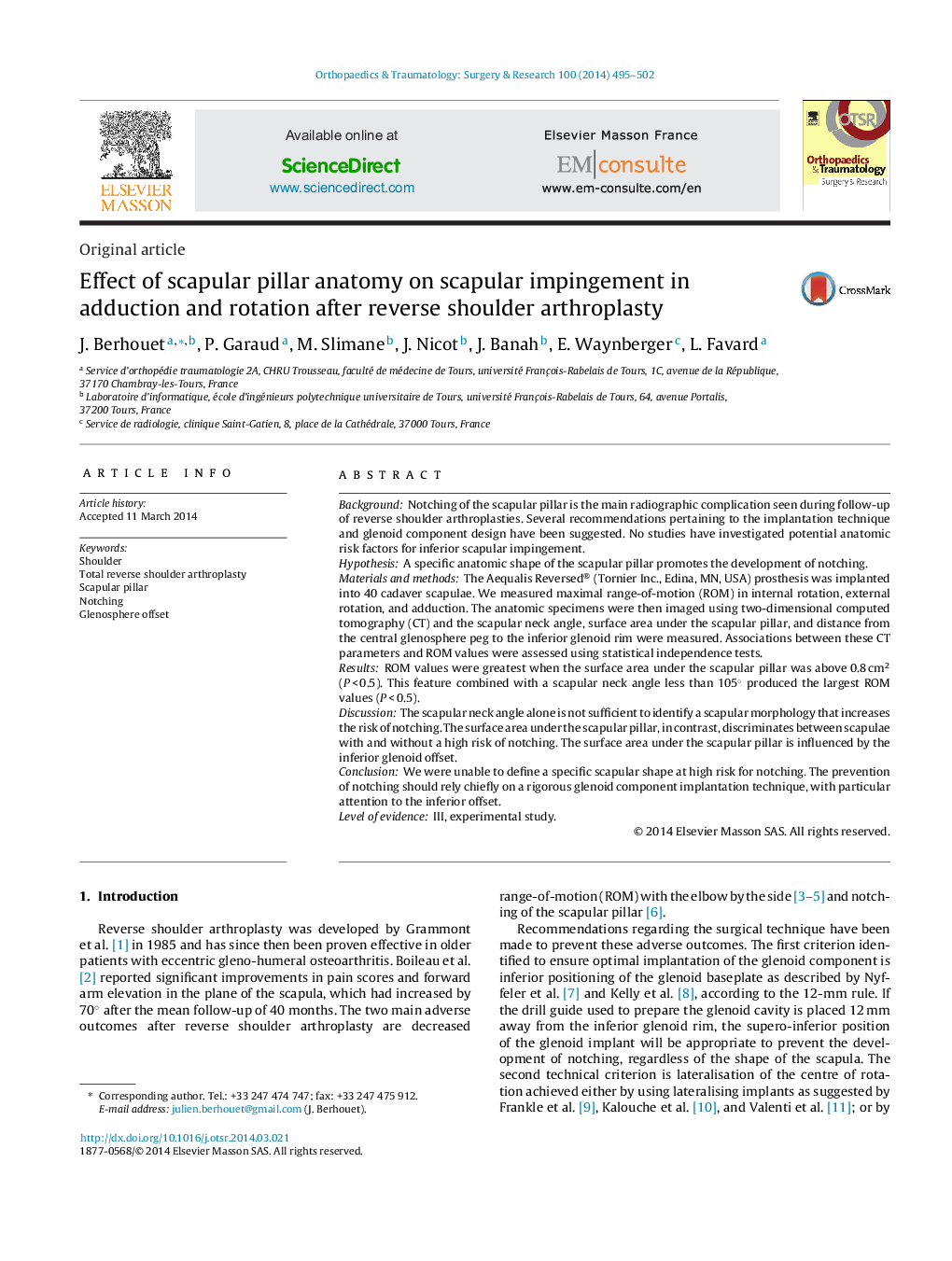| کد مقاله | کد نشریه | سال انتشار | مقاله انگلیسی | نسخه تمام متن |
|---|---|---|---|---|
| 4081375 | 1267590 | 2014 | 8 صفحه PDF | دانلود رایگان |
BackgroundNotching of the scapular pillar is the main radiographic complication seen during follow-up of reverse shoulder arthroplasties. Several recommendations pertaining to the implantation technique and glenoid component design have been suggested. No studies have investigated potential anatomic risk factors for inferior scapular impingement.HypothesisA specific anatomic shape of the scapular pillar promotes the development of notching.Materials and methodsThe Aequalis Reversed® (Tornier Inc., Edina, MN, USA) prosthesis was implanted into 40 cadaver scapulae. We measured maximal range-of-motion (ROM) in internal rotation, external rotation, and adduction. The anatomic specimens were then imaged using two-dimensional computed tomography (CT) and the scapular neck angle, surface area under the scapular pillar, and distance from the central glenosphere peg to the inferior glenoid rim were measured. Associations between these CT parameters and ROM values were assessed using statistical independence tests.ResultsROM values were greatest when the surface area under the scapular pillar was above 0.8 cm2 (P < 0.5). This feature combined with a scapular neck angle less than 105° produced the largest ROM values (P < 0.5).DiscussionThe scapular neck angle alone is not sufficient to identify a scapular morphology that increases the risk of notching. The surface area under the scapular pillar, in contrast, discriminates between scapulae with and without a high risk of notching. The surface area under the scapular pillar is influenced by the inferior glenoid offset.ConclusionWe were unable to define a specific scapular shape at high risk for notching. The prevention of notching should rely chiefly on a rigorous glenoid component implantation technique, with particular attention to the inferior offset.Level of evidenceIII, experimental study.
Journal: Orthopaedics & Traumatology: Surgery & Research - Volume 100, Issue 5, September 2014, Pages 495–502
